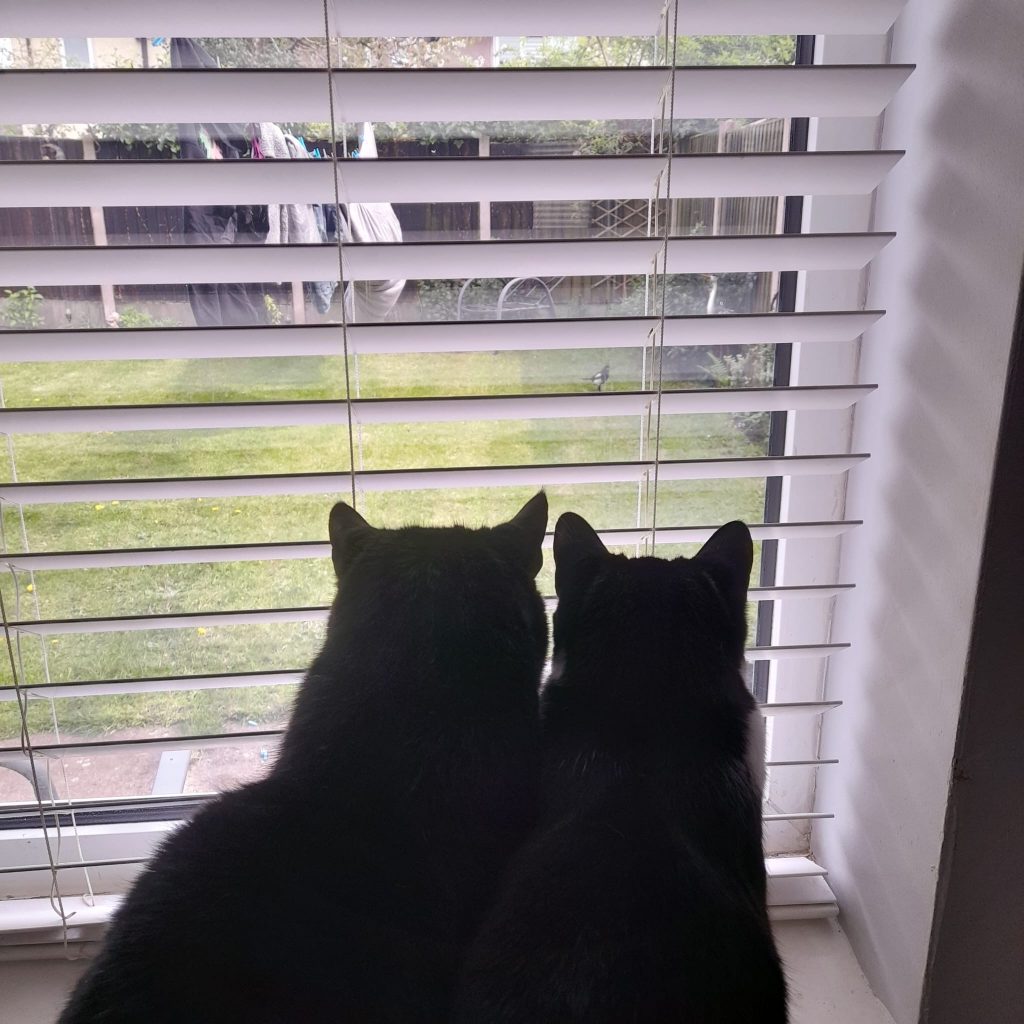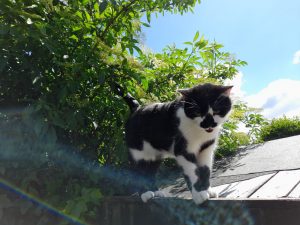
Rethinking Care: Sociological Perspectives from the Classroom
Students from the UoM’s new MA “Science, Sustainability and Society” explore today’s sustainability issues.
Images in this blog have been supplied by the SCI Blog Editor and Upsplash.
The MA module “Science, Sustainability and Society” is part of a new Sociology Masters Programme at UoM on Environment, Social Change and Sustainability. The module is led by SCI member, Dr Helen Holmes. As a part of a course assignment, students are contributing to a collective blog that explores sustainability issues, with a particular focus on the necessity and possibility of making informed choices in consumption behavior.
“Science, Sustainability and Society is an exciting new module at UoM Sociology devoted to exploring issues of environmental sustainability through a sociological lens. The module is mapped along the UN Sustainable Development Goals (SDGs). Each week we take a different topic related to the SDGs and explore the social impacts associated with the challenge. Topics include the provision of resources (water, food, energy); overconsumption and waste including textiles and plastic; sustainable cities and the sustainable university; and future policy pathways. Drawing on interdisciplinary approaches, we reflect upon current and often technocentric ‘solutions’ to environmental problems and identify any unintended consequences such solutions may have, – commenting Helen Holmes. – One assignment from the module is to produce a 500 word blog related to the topics we cover. It is fantastic to see these two outstanding blogs by students, Lottie and Alice, from the course”.
Urban Cats: Cute Companions or Biodiversity Threat?
By Lottie Hampson
For many of us, cats are cherished companions. But as their numbers grow in urban environments, so does their impact on the delicate balance of urban wildlife. Can we love our cats and protect biodiversity at the same time?
Role of Cats in Urban Ecosystems
Domestic cats are a unique anomaly in urban environments, crossing the boundary between lovable pets and instinctive predators, and their impact on urban wildlife is escalating.

Cats thrive in urban regions because of their adaptability and accompanying human feeding. Yet, because they contribute to wildlife mortality, especially in urban and suburban areas where their concentrations are abnormally high, their predatory behaviour is causing ecological issues [i]. Predation studies indicate that domestic cats in the UK kill more than 180 million prey individuals annually [ii]. This has seen a decline in many British garden bird populations, most affecting three bird species: dunnocks, blackbirds, and robins [iii].
In addition to affecting mortality, cats in urban areas and gardens have affected avian reproductive rates. For instance, when cats were present near urban blackbird nests, parental alarm calls increased, which in turn indirectly led to an increase in the number of predators preying on the nests [iv].
This combination of high feline populations, hunting instincts, and concentrated urban wildlife creates a perfect storm for ecological disruption. One that’s receiving urgent attention.
Balancing cat ownership and conservation
Although cats undoubtedly contribute to the loss of biodiversity, there are ways for people to coexist responsibly with both their pets and urban wildlife.
Cats kept indoors is the most common solution; nevertheless, if a cat has previously had access to the outdoors, it may be challenging to transition them to indoors full-time. Woods et al (2003)[v] found that cats who were kept inside at night brought home fewer dead or injured animals than cats that were permitted outside.
Non-invasive measures like eating foods high in protein and object play for 5-10 minutes every day also help to lower the frequency of cat predation [vi]. Cats usually prey because of a deficiency in provisioned food, and so seek to hunt to stimulate such. Therefore, it satisfies the food and play deficit by providing cats with meals high in meat and play activities that encourage their hunting instincts.
Thus, protecting urban wildlife doesn’t mean banishing cats, it means rethinking how we care for them. By keeping them indoors, enriching their environment, and supporting responsible pet ownership, we can protect both our beloved companions and the biodiversity that makes our cities thrive.
References
[i] Eid, E. (2025). The Silent City Hunters: Exploring Shrews through Stray Cats (Felis cats) in Urban Ecosystems in Jordan. Turkish Journal of Bioscience and Collections, Advance Online Publication. doi:https://doi.org/10.26650/tjbc.1588328.
[ii] Hanmer, H.J., Thomas, R.L. and Fellowes, M.D.E. (2017). Urbanisation influences range size of the domestic cat (Felis catus): consequences for conservation. Journal of Urban Ecology, [online] 3(1). doi:https://doi.org/10.1093/jue/jux014.
[iii] Pavisse, R., Vangeluwe, D. and Clergeau, P. (2019). Domestic Cat Predation on Garden Birds: An Analysis from European Ringing Programmes. Ardea, [online] 107(1), p.103. doi:https://doi.org/10.5253/arde.v107i1.a6.
[iv] Bonnington, C., Gaston, K.J. and Evans, K.L. (2013). Fearing the feline: domestic cats reduce avian fecundity through trait-mediated indirect effects that increase nest predation by other species. Journal of Applied Ecology, [online] 50(1), pp.15–24. doi:https://doi.org/10.1111/1365-2664.12025.
[v] Woods, M., McDonald, R.A. and Harris, S. (2003). Predation of wildlife by domestic cats Felis catus in Great Britain. Mammal Review, 33(2), pp.174–188. doi:https://doi.org/10.1046/j.1365-2907.2003.00017.x.
[vi] Cecchetti, M., Crowley, S.L., Goodwin, C.E.D. and McDonald, R.A. (2021). Provision of High Meat Content Food and Object Play Reduce Predation of Wild Animals by Domestic Cats Felis catus. Current Biology, [online] 31(5). doi:https://doi.org/10.1016/j.cub.2020.12.044.
Fast Fashion’s Dirty Secret: Why Our Clothes Are Choking the Planet
By Alice Giannina Iturbe Calderon
Fast fashion companies will have created hundreds of new garments in the time it takes you to read this blog, most of which will wind up in landfills or the ocean. What can we do to stop this vicious loop?
T-shirt in a half of the cost of a coffee takeout
The terrible reality of fast fashion is that it is an instrument that maintains interest in mass production, low-cost materials, and speed. The fashion business contributes 10% of global carbon emissions, which is higher than the combined effects of international travel and shipping, according to the UN Environment Program. To create one pair of jeans, the industry uses 2,000 gallons of water, which is even more environmentally harmful. In addition to squandering water, it releases harmful chemicals into the rivers and seas.
Out of Sight, Out of Mind

The problem with fast fashion is that it’s made to be thrown away – out-of-sight and out-of-mind. However, this issue remains. 49% of used textiles are thrown away in the UK alone, either being burned or ending up in landfills. Every year, almost 711,000 tons of clothing are wasted. Even abroad, the repercussions are evident, as second-hand clothes flood developing nations, harming local businesses and contaminating ecosystems. Even more, this is not only about waste. Vast amount of fast fashion is produced from or with addition with polyester. They release 500,000 tons of microplastics into our oceans each year, equivalent to 50 billion plastic bottles.
Greenwashing: The Fashion Industry’s Favourite Cover-Up
Many firms have responded to their unclean image by releasing “eco-friendly” collections. However, it is frequently greenwashing. Claims of ecological textiles and recycled materials are merely a diversion from the main problem, which is overproduction. Even though companies like Zara and H&M boast about their “conscious collections,” they nevertheless produce clothing at a startling rate. More items indicate more waste and pollution. The cycle never ends.
So, What Can We Do?
The good news is that this cycle can be broken. The first step is to support slow fashion (Fletcher, K, 2010). This paradigm is adopted by brands and designers, who prioritize quality over quantity, ethical production, and quality above quantity. By fixing old clothing, buying used, and just buying less, we are also reducing our fashion footprint.
It’s not just on us, though. Governments must take the initiative and enact stricter laws that govern environmental standards and output restrictions. Companies need to account for the waste they produce and the workers they take advantage of. And customers? We must continue to inquire into this issue. My clothes were manufactured by whom? Which materials were used? When I am done with it, where will it end up? Because fashion should not exist at the expense of people or the planet.
Bibliography.
Fletcher, K. (2010) ‘Slow Fashion: An Invitation for Systems Change’, Fashion Practice, 2(2), pp. 259–265, [Online]. Available at: https://doi.org/10.2752/175693810X12774625387594 [Accessed: March 19, 2025].
Maiti, R. (2025) Fast fashion and its environmental impact in 2025, Earth.org. Available at: https://earth.org/fast-fashions-detrimental-effect-on-the-environment/ (Accessed: March 21, 2025).
Stallard, E. (2022) “Fast fashion: How clothes are linked to climate change,” BBC, 10 June. Available at: https://www.bbc.co.uk/news/science-environment-60382624 (Accessed: March 21, 2025).
The price of our addiction to cheap fast fashion as pressure builds on UK second hand clothing market (2024) WRAP. Available at: https://www.wrap.ngo/media-centre/press-releases/price-our-addiction-cheap-fast-fashion-pressure-builds-uk-second-hand (Accessed: March 24, 2025).

0 Comments